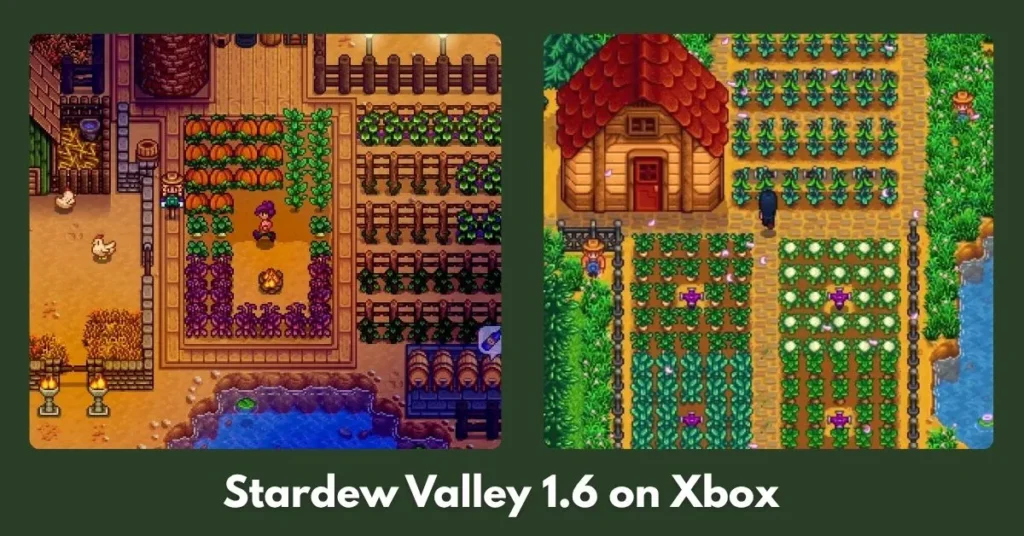We’ve all been there: the endless grind of a routine, the feeling that you’re just going through the motions. In our fast-paced world, finding a space to truly think, create, and build something of your own can feel like a luxury. This is precisely why a game like Stardew Valley has resonated with so many people. It’s more than a charming farming simulator; it’s a sandbox for creative expression that offers a deep, satisfying reward for innovative problem-solving and personal vision.
From the moment you arrive in Pelican Town, inheriting a dilapidated farm, the game hands you a blank canvas. The overgrown fields, the scattered stones, and the towering trees are not just obstacles—they are your raw materials. Unlike many games with a single, linear path to success, Stardew Valley offers a multitude of ways to play and prosper.
Do you want to become a master farmer, optimizing every inch of your land with the most profitable crops and efficient sprinkler systems? Or maybe you’d prefer to focus on a different path, like becoming a renowned angler, a shrewd miner, or a skilled forager? This freedom of choice is where the creative thinking truly begins.
Beyond the Farm: A Mindful Approach to Strategy
Stardew Valley‘s core loop—planting, watering, and harvesting—is simple, but the strategy is anything but. The game challenges you to think creatively about how you spend your time and energy.
- Farm Layout and Design: Your farm is a massive puzzle. Do you create a sprawling field of monoculture crops, or do you design a beautiful, symmetrical layout with a mix of crops, orchards, and decorative paths? The game’s open-ended nature encourages you to experiment with different designs, allowing you to express your artistic side while still being functional. The feeling of seeing your carefully planned layout come to life is a reward in itself.
- Resource Management and Problem-Solving: Every day presents new challenges. Are you short on wood for a new building? You’ll need to figure out the most efficient way to gather it without exhausting your character’s energy. Need a rare fish for the Community Center? You’ll have to consider the season, time of day, and weather. These aren’t rote tasks; they are mini-challenges that require thoughtful planning and strategic improvisation.
- Siloing Skills and Specialization: A key element of creative thinking in Stardew Valley is the ability to specialize. You don’t have to be good at everything. You can choose a profession—like Tiller for farming or Forester for foraging—that aligns with your chosen playstyle. This specialization allows you to delve deeper into a specific area, mastering its unique mechanics and discovering clever ways to maximize your output.
The Human Element: Building a Life and a Community
What truly elevates Stardew Valley is that your creative efforts aren’t just about profit; they’re about building a life. The relationships you form with the villagers of Pelican Town are an integral part of the experience. Giving gifts, completing quests, and attending festivals are all acts of creative engagement. You are not just a player in a game; you are an active participant in a living, breathing community.
The game encourages you to be mindful of each character’s likes and dislikes, a form of social problem-solving. This human connection gives your creative endeavors a sense of purpose. When you give a hand-forged sword to your friend Clint or a rare mushroom to the hermit Linus, you aren’t just completing a task—you’re nurturing a relationship and making the world a better place. The game’s narrative rewards this empathy and effort, making the player feel genuinely valued.
In a world that often prizes efficiency over creativity, Stardew Valley reminds us that the true joy of creation is in the process itself. It’s about taking a mess of an old farm and, through thoughtful effort and personal vision, turning it into something uniquely and beautifully your own.
Frequently Asked Questions
I’m new to Stardew Valley and feel overwhelmed. Where should I start?
Don’t worry, that’s a super common feeling! The best advice is to take it slow. Don’t feel pressured to do everything at once. In your first few in-game days, just focus on clearing a small patch of land, planting some basic crops, and exploring the town. The game is designed to be a marathon, not a sprint, so just enjoy the journey!
Is it better to join the Community Center or JojaMart?
This is one of the biggest choices in the game! The Community Center path is more focused on giving back to the community and completing bundles of items. The JojaMart path is all about using gold to restore the town. The Community Center is widely considered to be a more rewarding and fulfilling experience, both in terms of gameplay and story. Plus, you get a cool movie theater as a reward!
What is the best way to make money in the early game?
Fishing is a fantastic way to earn cash in the early game. You don’t need much energy, and you can catch fish that sell for a good price. Once you have a little bit of gold saved up, you can invest in more seeds and start building up your farming empire!
Conclusion
Stardew Valley isn’t just another game; it’s a testament to the power of creative thinking and the deep satisfaction that comes from bringing a vision to life. From the grand strategy of a farm layout to the small act of choosing the perfect gift for a villager, every action is an opportunity for a creative solution. It reminds us that even in a digital world, the most rewarding experiences are often the ones we build for ourselves, brick by pixel. It’s a gentle, charming reminder that sometimes, all you need is a patch of dirt and a little imagination to create something truly extraordinary.



